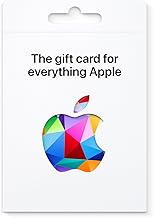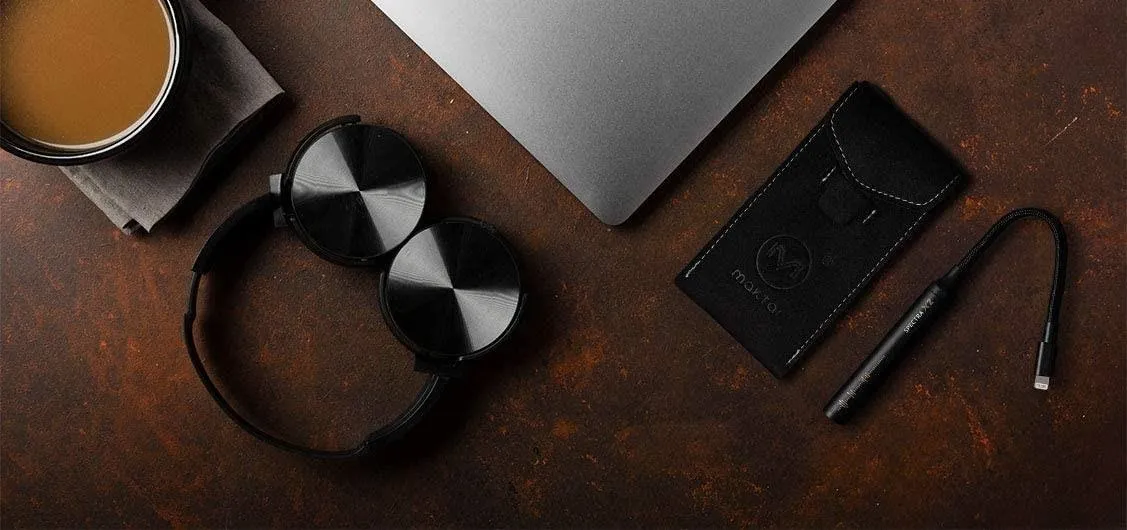On May 17, Apple announced that Lossless Audio playback for Apple Music was finally coming to subscribers in June. The long-awaited option will let users stream songs at a much higher quality than ever before. Still, in the fine print, Apple noted that you wouldn't be able to listen to the best sound quality — Hi-Resolution Lossless — on your iPhone without a DAC.
Hi-Resolution Lossless is included alongside the normal Lossless Audio playback and Spacial Audio features that Apple brings to Apple Music. While the extra high-definition audio comes at no extra charge, it does require buying a DAC, which isn't necessarily cheap. We'll dive into what lossless even means, what a DAC is, why you need one, and which DACs might work best for your particular setup.
- Don't Miss: 7 Cool Features iOS 14.5 Adds to Your iPhone's Music App — For Apple Music & Your Own Library
What Is Lossless Playback?
Digital music, like all digital files, is made up of a large collection of ones and zeros. These binary numbers carry the information needed to play each song, which your audio processor decodes to play the tunes you hear in your headphones.
Traditionally, digital music has prioritized file size over quality because storage space and streaming data used to be more limited. These files are compressed, which removes some of the less-critical binary data from the music, such as less audible sounds that may have no immediately obvious effect on the song's fidelity. Most of us never know this data is missing due to lossy compression, but the better quality your equipment is, the more noticeable the compression.
As its name implies, Lossless refers to music files that don't lose any important information during compression. The idea is to provide a listening experience that matches the master recording file so that you can hear the same sounds that the artist and producers intended in the studio. With Apple's lossless format, files take up about half as much space as the raw uncompressed data would but are generally much larger than their lossy counterparts.
What Are Apple's Lossless Formats?
Apple Music's Lossless Audio uses Apple's ALAC (Apple Lossless Audio Codec) to preserve the fidelity of the original data. ALAC has been around since 2004 but is only just hitting the Apple Music streaming service. This lossless compression starts at CD quality, which has a bit depth and sample rate of 16 bit at 44.1 kHz (kilohertz), and can reach as high as 24 bit at 48 kHz.
So long as your "Audio Quality" settings are correct when you boot up iOS 14.6's enhanced Apple Music service on your iPhone, you can start listening to more than 75 million songs in Lossless Audio right away using your wired or wireless headphones. But not all lossless is equal, and there's an even better way to listen to Apple Music on your iPhone.
Apple includes a "Hi-Res" lossless option for Apple Music that bumps the file sizes up to 24 bit at 192 kHz. Once you reach Hi-Res territory, a simple iPhone and headphones setup simply won't cut it.
Why Is a DAC Is Needed for High-Res Lossless Audio?
A DAC, or digital-to-analog converter, is simply an audio processor. What it does is take the burden off your iPhone's or other Apple device's likely weak sound card and performs all of the audio processing itself. Because the device is specifically designed for this type of processing, it's better at handling the large amount of data that comes with Hi-Res Lossless Audio.
A Lightning-based DAC can also supercharge your headphones if they require it. All headphones have an impedance rating in ohms, and it dictates the amount of power needed from the amplifier to function properly. Higher-end headphones traditionally have a higher impedance, requiring a DAC capable of outputting enough power to reach their full potential. Unless you're dropping some serious cash on your headphones, most DACs will likely power your headphones just fine.
Speaking of headphones, DACs are not made for wireless headphones. To listen to Hi-Res Lossless Audio on Apple Music, you'll need a pair of wired headphones. That's because wireless headphones use Bluetooth technology, which needs to compress audio files. Bluetooth 5.0 maxes out at 2 Mbps streaming, but Hi-Res Lossless Audio requires 9.2 Mbps.
But Apple has stated that even Lossless Audio won't work over Bluetooth, so your AirPods won't do you any good — you'll need a wired connection. AirPods Max can connect to devices with a wired adapter, but Apple recently said, "AirPods Max currently does not support digital audio formats in wired mode."
DACs are built into Apple devices like the iPhone, but they are only mid-range DACs that max out at 24 bit at 48 kHz. Apple's Lightning to 3.5 mm Headphone Jack Adapter has a DAC, but it likely maxes out at the same bit depth and sample rate. Some Lightning and USB headphones have DACs, but again, they likely won't get you Hi-Res compatibility. That's why a higher-quality DAC is needed.
Although it requires a DAC for Hi-Res Lossless Audio playback, Apple doesn't have any recommendations for which one to buy. The company says any DAC should work fine, but one search on Amazon makes buying one a bit of an overwhelming decision. We break down some options for you to make it easier to figure out which DAC works best for your situation.
Made for iPhone (FiiO Q1 Mark II Native)
FiiO's Q1 Mark II Native DSD DAC & Amplifier might have a long name, but it makes for a great product. This DAC is made for Lightning ports, something you don't see in many DACs on the market. That means no adapter is necessary for iPhone; just plug the Q1 Mark II into your iPhone, plug your headphones into the DAC, and enjoy Hi-Res Lossless Audio.
This DAC features an output wheel, bass booster, low or high gain switcher, single-ended and balanced headphones outputs, and automatically determines what type of device it's plugged into. It can decode files up to 32 bit at 384 kHz, which is well above the ceiling for Hi-Res Apple Music tracks.
The Q1 Mark II is a respectable $99.99 and is MFi certified. That means it was specifically made for use with Apple products, so you know it plays nice with iOS and the iPhone. That said, it's a Lightning device that isn't directly compatible with USB-C Apple devices like iPads or Macs. If you go with this one for one of those devices, you'll need a Lightning-to-USB-C adapter.
- Amazon: FiiO Q1 Mark II Native DSD DAC & Amplifier for PC/MobilePhone ($99.99)
More Affordable (FiiO E10K)
If you want to shave some money off that price tag, FiiO has another option for you: the E10K. This DAC is $75.99 and uses Micro-USB to USB for connecting to your devices. That might make it more compatible with other devices in your life, but for your iPhone, you'll need a Lightning-to-USB adapter.
This DAC doesn't sport quite as many features as the Mark II Native. That said, you still have an output wheel, a bass booster, and a high or low gain switch, but that's about it. Still, if all you need is something to take advantage of Hi-Res Lossless Apple Music files, this DAC will work just fine, pumping out files up to 24 bit at 96 kHz.
- Amazon: FiiO E10K USB DAC and Headphone Amplifier (Black) ($75.99)
Dongle-Life Convenience (Maktar Spectra X2)
Let's face it — DACs are awesome, but they're a little big. While they'll slip into most bags and carry-ons, they still aren't the ideal portable adapter. That's why you should consider Maktar's Spectra X2, a dongle DAC that will let you listen to Hi-Res Lossless Audio without carrying around a small brick in your bag.
Better yet, this dongle is made for Lightning, so it connects directly to your iPhone. Again, if you want to use it with a USB-C product, you'll need to buy an adapter, but this dongle is pure convenience for iPhone audiophiles. It also can drive headphones up to 150 ohms and decodes 32 bit at 384 kHz files.
It just isn't super cheap. At $199.00, it's more pricy than the first two options on this list. But if you're willing to spend a little more for that extra convenience, you'll be happy with the Maktar.
- Amazon: Maktar Spectra X2 Lightning Portable DAC ($199.00)
Good for Desktop (AudioQuest DragonFly)
If you know that you're going to be a heavy Apple Music desktop user, consider the AudioQuest DragonFly. It looks just like a USB thumb drive, which you can easily plug into any USB-A port on your setup. Of course, if you have a USB-C Mac or want to use this device with your iPhone, it's adapter-city for you.
It supports decoding up to 24 bit at 96 kHz, perfect for Apple Music Hi-Res Lossless, and features a headphone jack on the other end of the stick. There's even a convenience cap for the USB connector to protect it. At $99.95, it isn't an unreasonably priced DAC, especially for the convenience (if your setup makes it convenient, anyway).
Over-the-Top, Money-to-Burn (Chord Mojo Black DAC)
If you must have the best portable DAC money can buy, you might want to turn your attention to the Chord Mojo Black DAC. This beast can power two headphones up to 600 ohms at the same time. If you happen to have two headphones that match this description at your disposal, nothing on this list will use their full potential like the Mojo.
It can also decode the largest file sizes of any DAC on this list — 32 bit at 768 kHz. Of course, all the DACs on our list go above and beyond Apple's ceiling for file sizes, but if you think you'll need a powerful DAC for other purposes, this one will certainly not let you down.
That said, they don't just give these things away. Quite the opposite, actually; the Mojo can be yours for not $399, not $499, but $699. For the price of an iPhone 12 mini, you can blast two costly headphones from one very expensive DAC.
- Amazon: Chord Mojo Black DAC/Headphone Amplifier ($699)
Cover image by Maktar/Amazon

































Comments
Be the first, drop a comment!